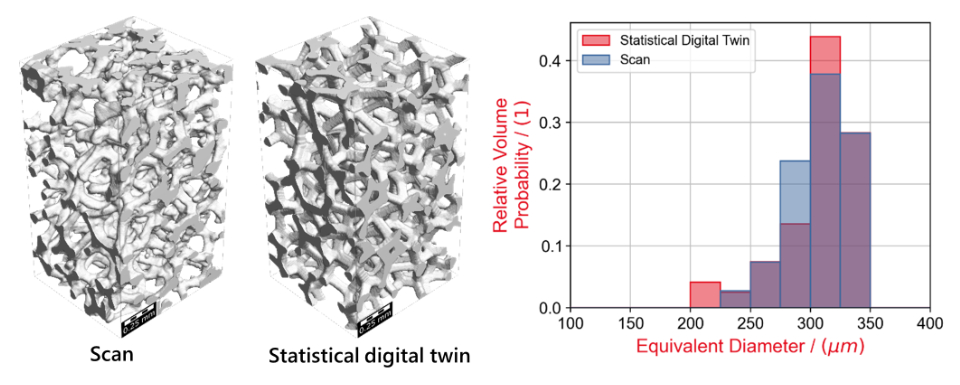GeoDict offers many features for the development of nonwovens, polymer and metal foams, laser sintered materials, composites, and ceramics. In the GeoDict 2022 release, many of these functionalities are greatly improved and those relevant for Digital Materials R&D are presented in this talk.
- The identification of single fibers in an imported μCT-scan is an important step in the analysis of fibrous materials. For this reason, the post-processing of FiberFind-AI has gained power in GeoDict 2022. Now, the fibers can be segmented into batches by their properties, such as diameter, and these batches can be evaluated individually in regard to other properties, such as orientation or curvature.
- In many foams, the struts have a triangular crosssection, but until now FoamGeo generated only round or hollow struts. For this reason, generation of foams with triangular cross-section struts is now available in GeoDict 2022. The modelling of a statistical Digital Twin of a metal foam will be presented.
- More modelling options e. g. for laser sintered materials are now available in GridGeo. This includes a wide range of lattice-based structures and triply periodic minimal surfaces.
- Up to now, only Neumann Series was available as solver method for nonlinearity in the FeelMath solver running under ElastoDict. Now, Conjugate Gradient, which has already been the standard solver for linear problems, can also handle nonlinear simulations. This leads to shorter runtimes and better results, for example in the simulation of damage in composites.
Other important features of GeoDict are presented in the other talks of the Digital Materials R&D session.

